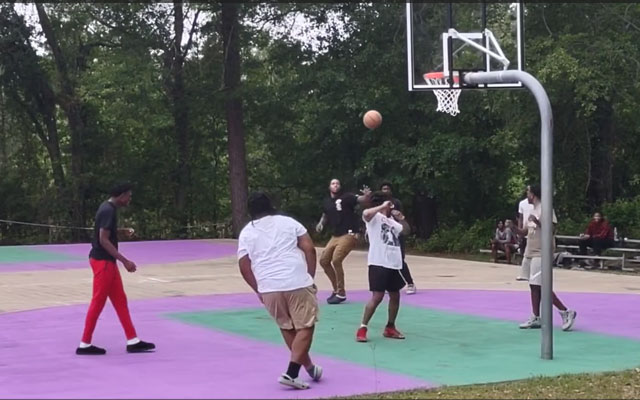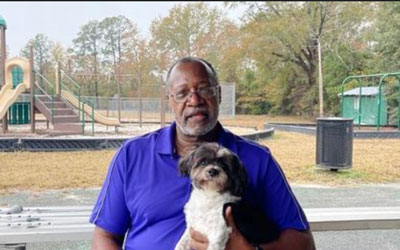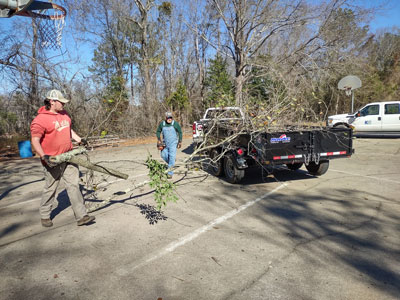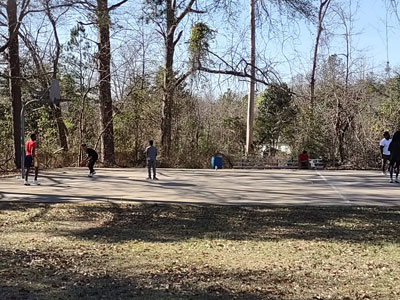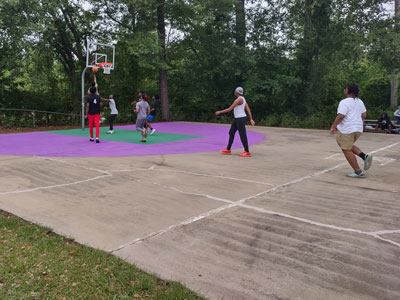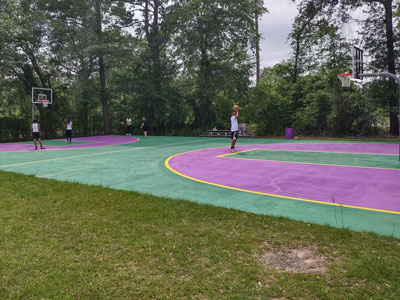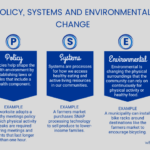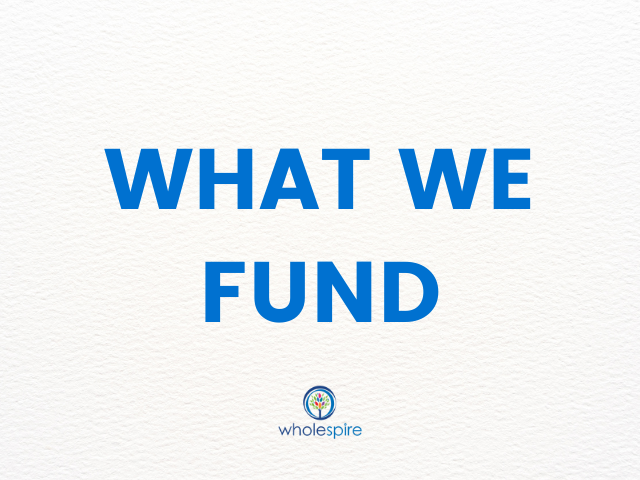
Wholespire-funded PSE projects that can lead to healthier, more thriving communities
Now that you’ve learned more about the differences between policy, systems and environmental (PSE) change and programs, you should have a better understanding of why we focus on PSE projects in community health improvement, especially health eating and active living.
For this blog post, we’re organizing project examples by these categories: Activity-Friendly Communities, Access to Healthy Food, Healthy School Environments and Youth Engagement. Staff share their expertise, or technical assistance, within several sectors of community: municipalities, state agencies, coalitions, schools, faith-based organizations and other nonprofit organizations.
Below is an incomplete list of community-level projects Wholespire has supported with mini-grants. The list features examples of PSE projects implemented by various communities across South Carolina. All focus areas marked with an asterisk (*) indicate a level of partnership and collaboration with local government and regulatory agencies required to complete the projects.
Activity-Friendly Communities
Activity-friendly communities are vibrant spaces where people of all ages and abilities can easily and safely enjoy walking, bicycling, rolling and other forms of active transportation and recreation. Communities must be thoughtfully designed and include policies, systems, and environmental supports that allow daily active transportation and recreation.
Focus Area
|
Project/Tactic
|
Items Funded
|
Bicycle and Pedestrian Routes and Trails
|
Provide adequate signage to improve pedestrian safety | Safety signs, paint and other tools |
| Install way-finding signage | Signs, posts, hardware and installation costs | |
| Create maps of community/ neighborhood walking and biking routes | Development of a map | |
| Develop Born Learning Trails |
Signs, posts, hardware, paint, brushes, etc. | |
| Install detectable warnings surfaces on curb ramps for people with disabilities |
Concrete pavers, brick pavers or other products; directional and warning signs |
|
| Address pedestrian and bicycle safety to increase walking and bicycling | Paint and supplies for repainting crosswalks, traffic-calming signs, pavement markings, etc. | |
| Transform a trail or paved pathway into a Storywalk | Kiosks, installation supplies and costs | |
| Transform a trail or paved pathway into a fitness trail | Purchase outdoor exercise system equipment/stations | |
Parks, Playgrounds and Other Recreational Facilities
|
Provide bike racks at recreational facilities, schools, and businesses | Purchase and installation costs |
| Provide benches at parks, paved walking paths, playgrounds, ADA picnic tables, etc. | Purchase and installation costs | |
| Improve park/recreational facilities | Recreational equipment such as basketball goals, soccer goals, playground equipment, balls, and other needs | |
| Create inclusive play spaces for people with disabilities |
Sensory panels, inclusive swings, and other inclusive play equipment; ramps, braille and sign language signs; accessible drinking water fountains/water bottle refill stations
|
|
| Improve accessibility and ADA compliance | Rubber mats for playgrounds, ADA signs, ramps, and other needs | |
| Create or upgrade a community basketball court | Land grading, concrete, basketball goals, paint, stencils, supplies to repair cracks on surface | |
| Create a disc golf course | Disc golf backets, disc golf frisbees, equipment needed for installation | |
Open Community Use* |
Adopt an open community use policy to allow the public to use school recreational facilities during non-school hours |
Signs featuring hours of operation and rules of use
|
| Additional equipment or resources needed such as trash cans, benches, landscaping, soccer goals | ||
| New and safer playground equipment | ||
Safe Routes to School* |
Improve bicycle riding to school | Paint and supplies for curbs, crosswalks and other safety areas |
| Effective Student Pick-up and Drop-off Design | Signs to define areas in drop-off and pick-up zones and explain their proper use | |
| Enhanced Visibility Crosswalks/ re-painting of crosswalks leading to the school | Stencils, paint, supplies | |
| Crossing Guard Supplies/Safety Equipment | Reflective vests, stop/go handheld signs, portable stop/go/slow signs and other safety equipment | |
| Improve school traffic safety during drop off and pick up | Supplies for road surface markings, curb markings, delineators, colored pavements, and traffic channelizing devices, lights for portico | |
Access to Drinking Water
|
Ensure drinking water is available in public spaces | Water bottle refill stations, accessible drinking water fountains, water fountains featuring a dog bowl |
Access to Healthy Food
Access to healthy food refers to the availability, affordability, and consistency of foods and beverages that promote well-being and prevent chronic disease. Areas that lack access to healthy foods are known as food deserts. Ensuring access to healthy food is an important element of an equitable food system, one in which those most vulnerable and those living in low-income neighborhoods, communities of color, and rural and tribal communities can fully participate, prosper, and benefit.
Focus Area |
Project/Tactic |
Items Funded |
Farmer’s Markets
|
Establish new farmers’ markets | Sandwich boards, employee/farmer aprons, SNAP/WIC processing equipment and Wi-Fi hot spots, signage, SNAP/WIC promotional signs |
| Increase access for people with disabilities | Paint and signs for parking, materials and supplies for curb ramps | |
Mobile markets
|
Accept SNAP, WIC, Senior SNAP and Healthy Bucks | SNAP/WIC processing equipment and Wi-Fi hotspots, SNAP/WIC promotional signs |
Community Gardens
|
Create or expand a network of community gardens | Materials to build gardening beds: lumber, cement blocks, planting soil, mulch; Water meter and backflow gauge, signage, Gardening tools (rakes, hoes, etc.), tiller |
Other food access projects |
Provide free gleaned produce stations at a local, public facility | Shelves, baskets, bins and other food storage supplies, chalkboard signs |
Healthy School Environments
Promoting healthy eating and active living in the school environment is crucial for the overall well-being of students and staff. When students have nutritious meals and are physically active, their performance and attention span reflect those elements of healthy school environments. A healthy school environment applies to the indoor and outdoor environments of the school and the surrounding environments.
Focus Area
|
Project/Tactic |
Items Funded |
Farm-to-School |
School Gardens |
Materials to build garden beds, soil, mulch, benches, picnic tables, Gardening tools (rakes, hoes, etc.)
|
Open Community Use* |
Adopt an open community use policy to allow the public to use school recreational facilities during non-school hours | Purchase signs featuring hours of operation and rules of use |
| Purchase additional equipment or resources needed such as trash cans, benches, landscaping, soccer goals | ||
| Purchase new and safer playground equipment | ||
FitnessGram |
Provide physical activity resources for ALL teachers (not just PE) |
Purchase physical activity equipment, tools
|
Alliance for a Healthier Generation Healthy Schools Program |
Implement the Alliance Healthy Schools Program Framework of Criteria through the 6 Step Process for building a healthier school environment |
Activities and materials for implementing Alliance for a Healthier Generation Healthy Schools Program
|
Out of School/Afterschool
|
Provide physical activities before, during and after school for students and parents | Create a paved walking track, rubber mulch mats, railroad ties, spikes, benches, solar lights, active pathways, distance markers, etc. |
| Retrofit and install safe water sources | Water refill stations, water fountains, accessible water fountains | |
Safe Routes to School* |
Improve bicycle riding to school | Paint and supplies for curbs, crosswalks and other safety areas |
| Effective Student Pick-up and Drop-off Design | Signs to define areas in drop-off and pick-up zones and explain their proper use | |
| Enhanced Visibility Crosswalks/ re-painting of crosswalks leading to the school | Stencils, paint, supplies | |
| Crossing Guard Supplies/Safety Equipment | Reflective vests, stop/go handheld signs, portable stop/go/slow signs and other safety equipment | |
| Improve school traffic safety during drop off and pick up | Supplies for road surface markings, curb markings, delineators, colored pavements, and traffic channelizing devices, lights for portico | |
Access to Drinking Water
|
Retrofit and install safe water sources | Water refill stations, water fountains, accessible water fountains |
Transform the physical environment to increase students’ PA and other pro-social learning and play behaviors
|
Improve outdoor playground equipment | Purchase PA equipment, such as slides, swings, ladders, and various climbing structures for students to interact with; upgrade basketball goals |
| Increase the variety of outdoor play options | Add painted play spaces or markings to the playground | |
| Create active pathways in hallways and walkways | Stencils, paint and other materials | |
| Create inclusive spaces for people with disabilities | Purchase grip volleyballs, ringing volleyballs and other specialty balls and play equipment for kids with disabilities, smooth surfaces likes rubber mats | |
| Create an Outdoor Classroom | Picnic tables, benches, and other materials |
Youth Engagement (The HYPE Project®)
Engaging youth in community health improvement can be a driving force for change. Through the Healthy Young People Empowerment (HYPE) Project®, youth develop critical thinking skills, build relationships with community stakeholders and have fun learning practical ways to create policy, systems and environmental (PSE) changes. Youth can implement any of the projects mentioned above; however, below are examples of HYPE civic action projects Wholespire has funded.
Focus Area |
Project/Tactic |
Items Funded |
School-based PSE Projects |
Mobile Breakfast Carts | Food cart, wrapping for cart |
| Improve pedestrian and bicycling safety of students | Supplies for conducting a walkability assessment | |
Community-based PSE Projects |
Update a local park | Benches, trash receptables, benches, paint and supplies, park signs |
| Upgrade a community basketball court | Basketball goals, paint, stencils, supplies to repair cracks on surface | |
| Playground improvements | Volleyball net, disability swings, trash receptables, benches, paint and supplies, park signs | |
Faith-based PSE Projects |
Create or expand a network of church gardens |
Materials to build gardening beds: lumber, cement blocks, planting soil, mulch; signage, gardening tools (rakes, hoes, etc.)
|
| Include health in all policies | Social hall signs displaying healthy eating policies | |
| Increase fruit and vegetable consumption at church | Equipment for a salad bar | |
| Create a smoke-free environment | No Smoking signs |

